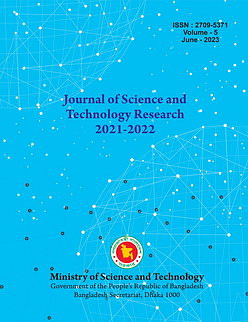Factors Related to Raised Intraocular Pressure: In a Tertiary Hospital in Bangladesh
DOI:
https://doi.org/10.3329/jscitr.v5i1.74017Keywords:
Glaucoma; 10P; POAG; Tonometer; Refractive errorAbstract
Glaucoma, a leading cause of irreversible blindness globally, accounts for 8% of such cases. The probability of developing glaucoma appears to be elevated in individuals with systemic hypertension or diabetes mellitus. Elevated intraocular pressure (IOP) is the only modifiable risk factor associated with the development and progression of glaucoma, and both medical and surgical interventions are available for its management. This study, conducted in the Ophthalmology department of BSMMU from July 2021 to June 2022, was a hospital-based cross-sectional investigation with a sample size of 153. The majority of participants fell into the 41-50 age group, with a mean age of 37.15±17.14. 41.8% of the responders were men and 58.2% were women. Refractive errors were identified in 7.2% of cases, with primary open-angle glaucoma (POAG) diagnosed in 60% of cases, normal-tension glaucoma (NTG) in 11.1%, and angle-closure glaucoma (PACG) in 10.5%, among other types. The study also observed associations between age groups and IOP levels, with 42% of individuals aged 30-50 having IOP in the 18-22 mmHg range. Additionally, 50% of established glaucoma cases had diabetes mellitus, 30% had hypertension, and 10% had a history of steroid therapy. Together with other variables including steroid usage, diabetes, and hypertension, high IOP continues to be a substantial risk factor for the start and progression of glaucoma.
J. of Sci. and Tech. Res. 5(1): 157-162, 2023
192
189
Downloads
Published
How to Cite
Issue
Section
License
Copyright (c) 2023 M S Ahmed, S M Noman, Q S Mahnur

This work is licensed under a Creative Commons Attribution 4.0 International License.




